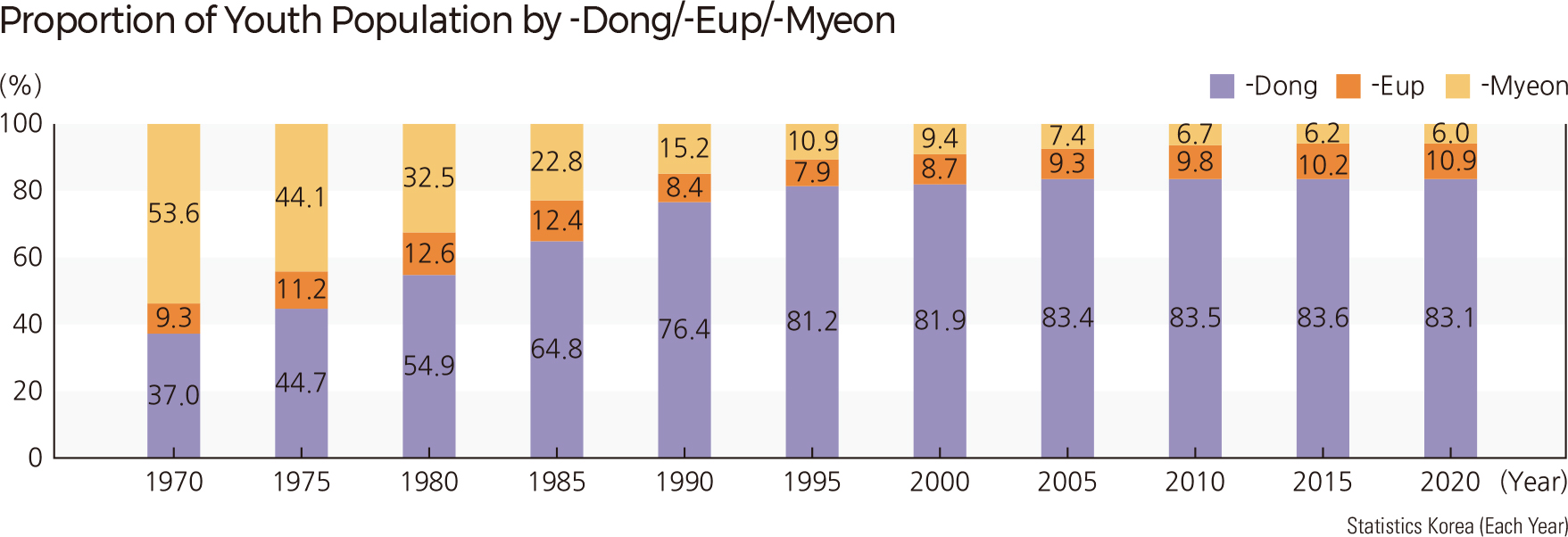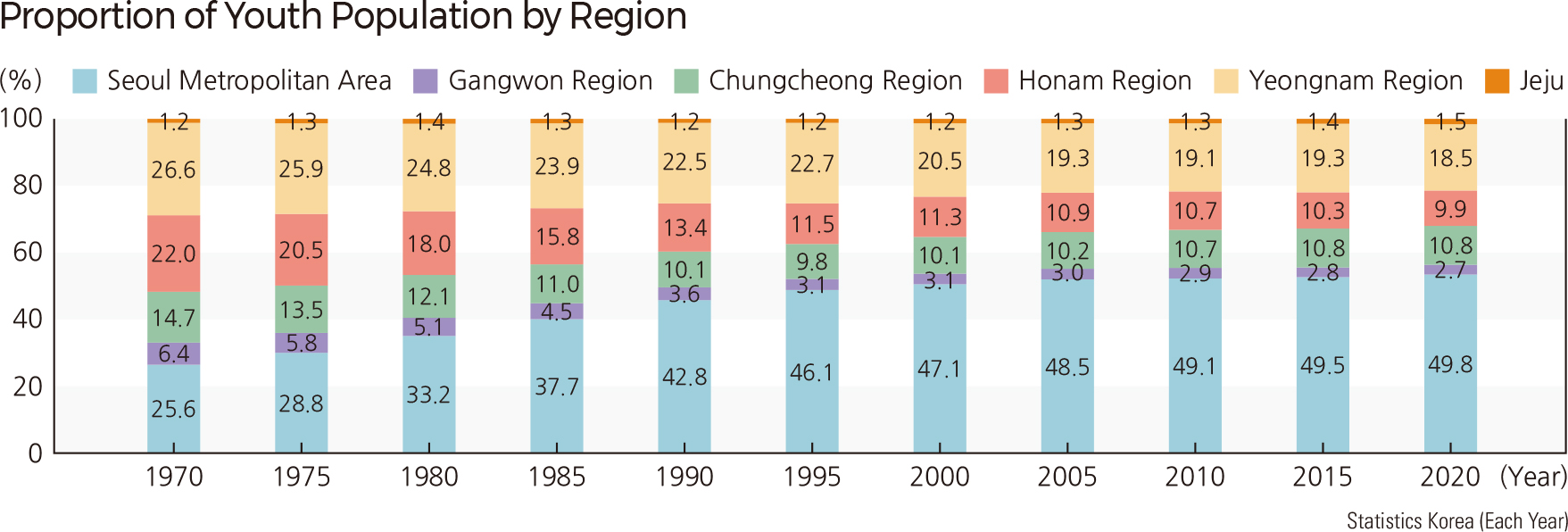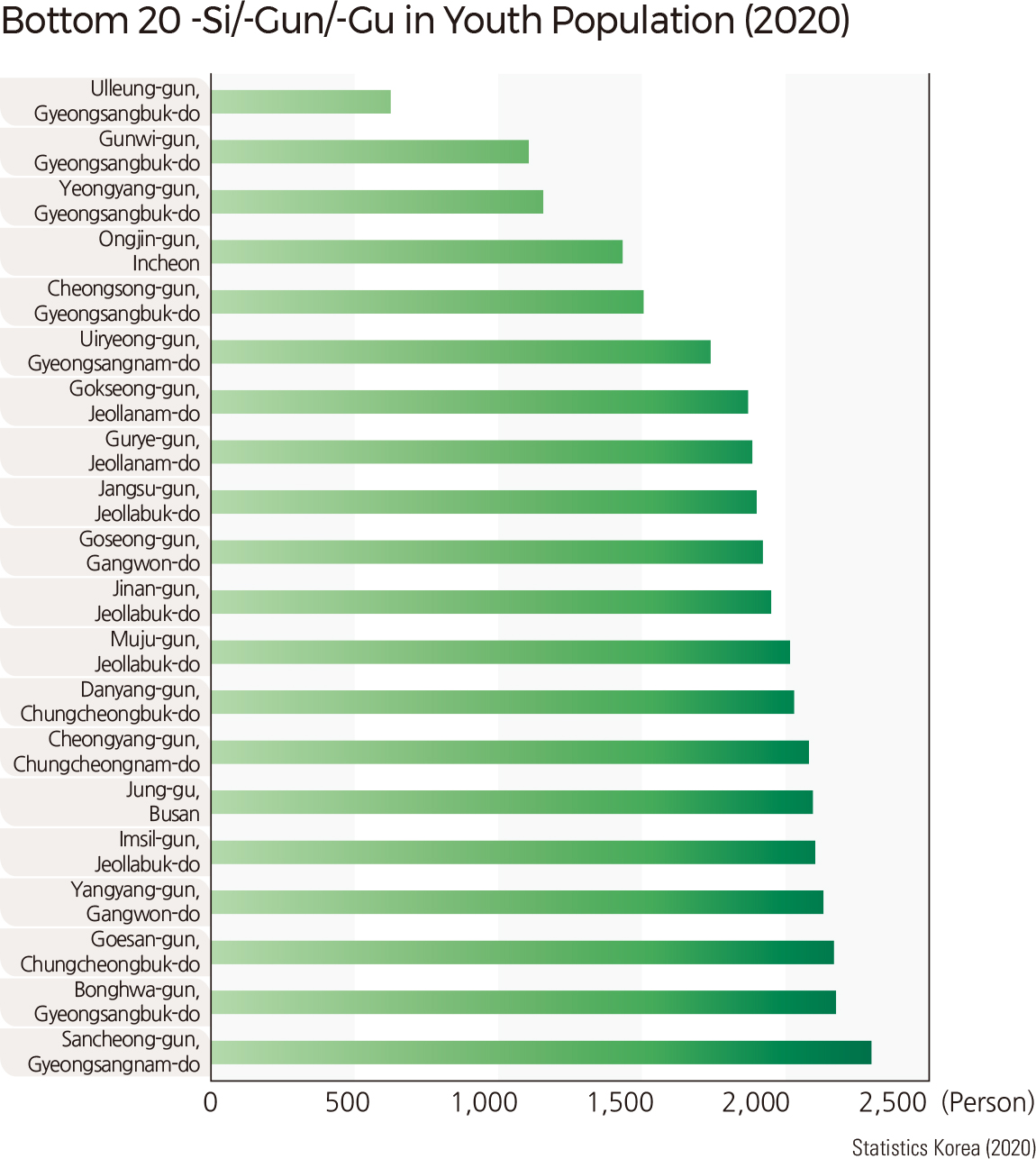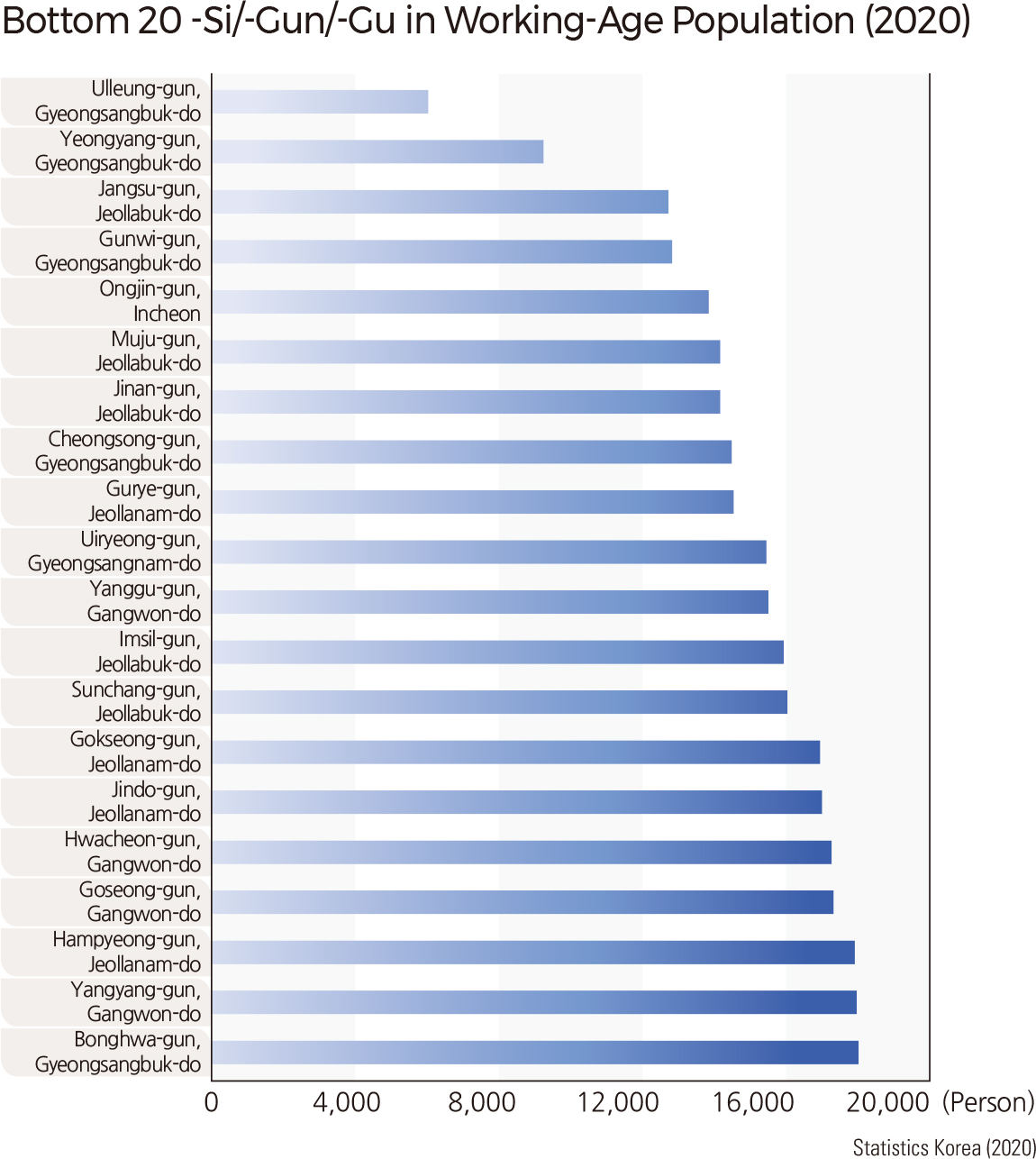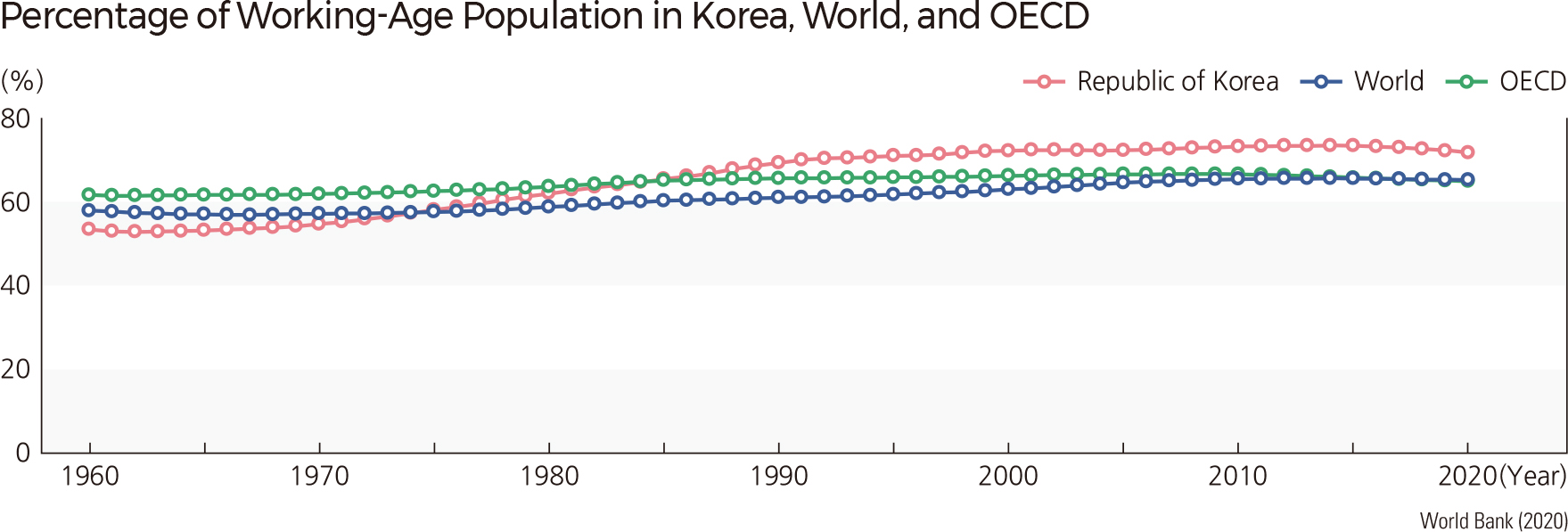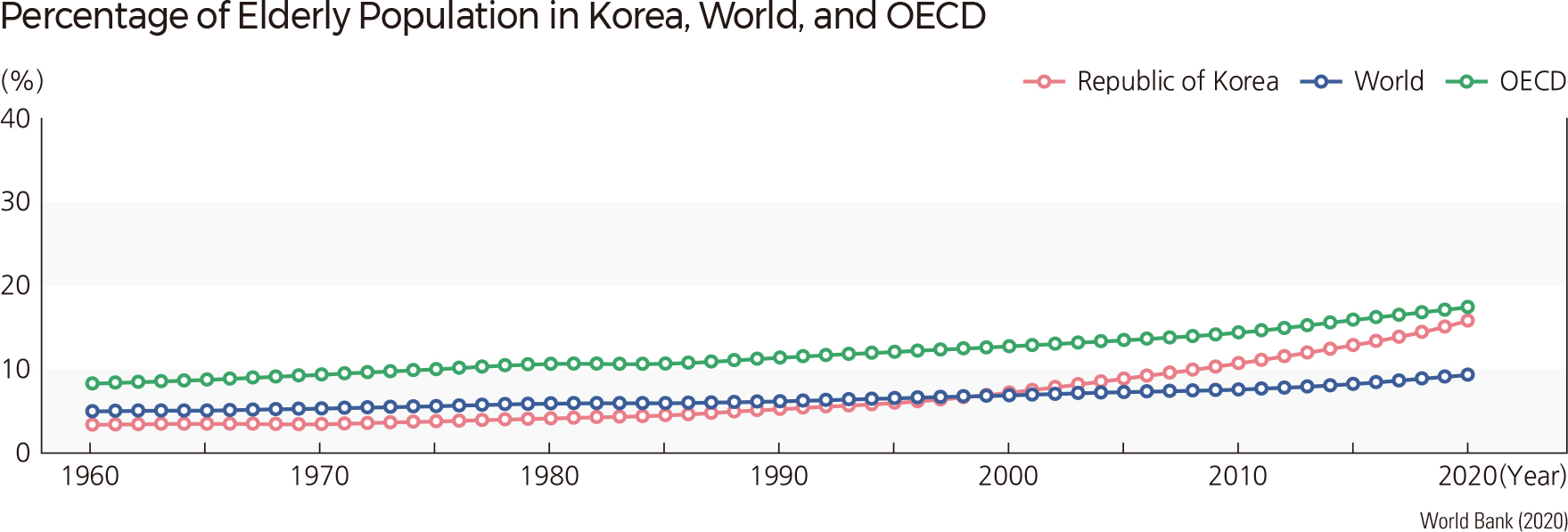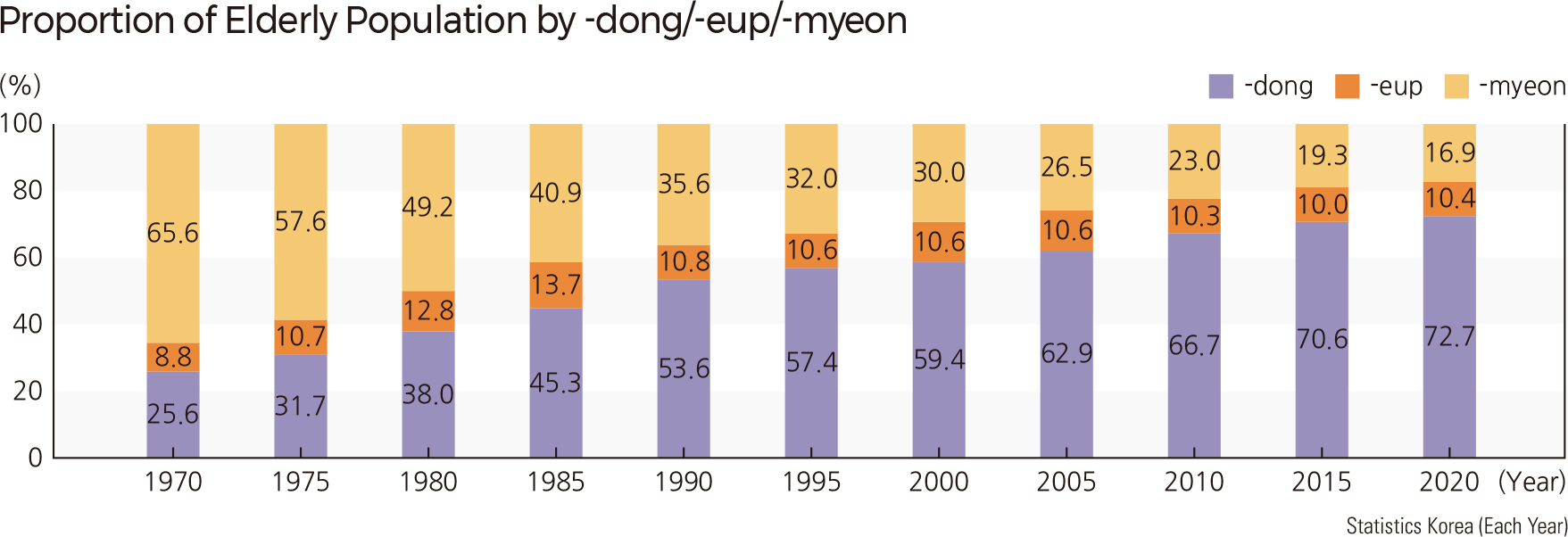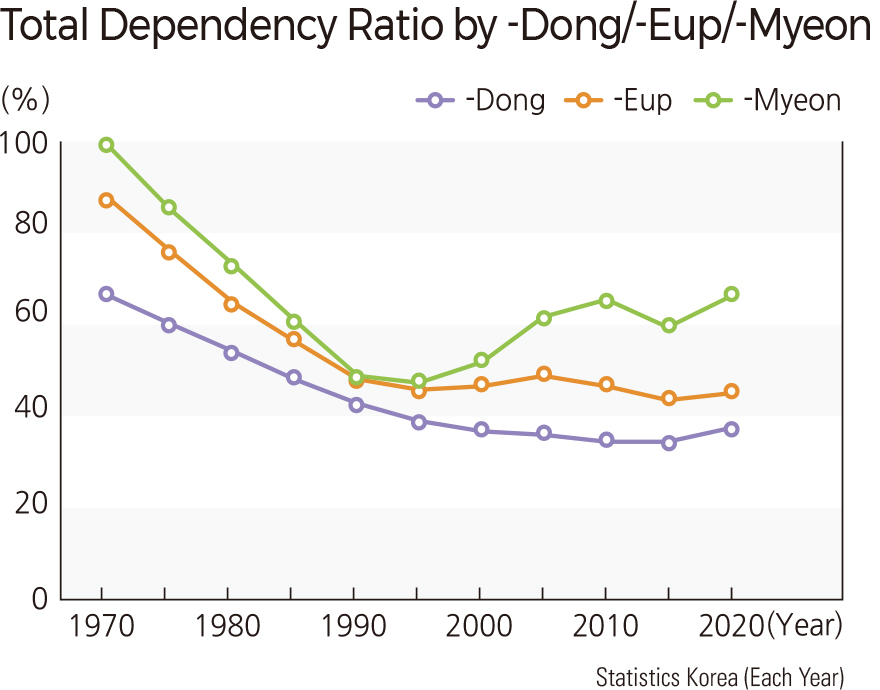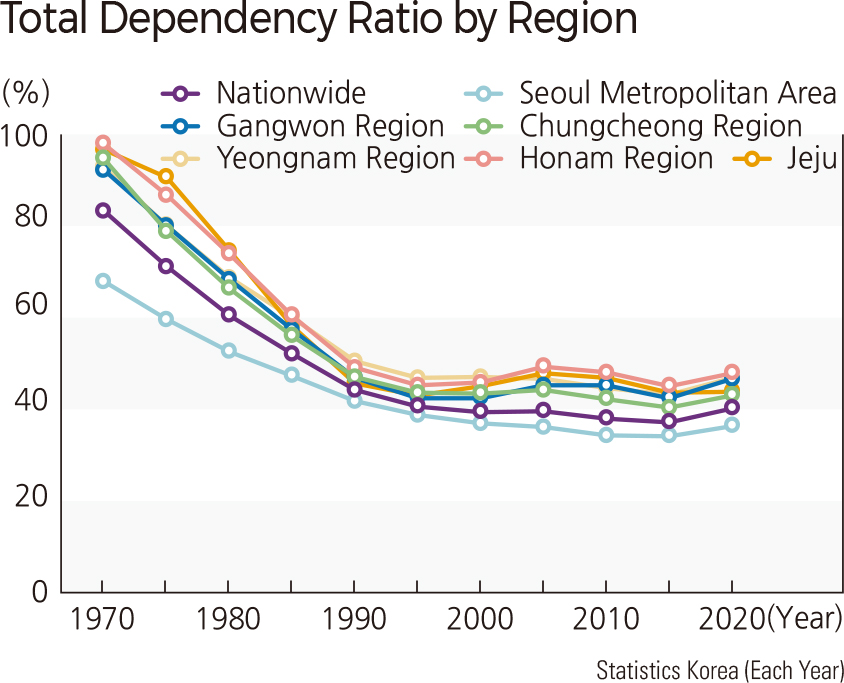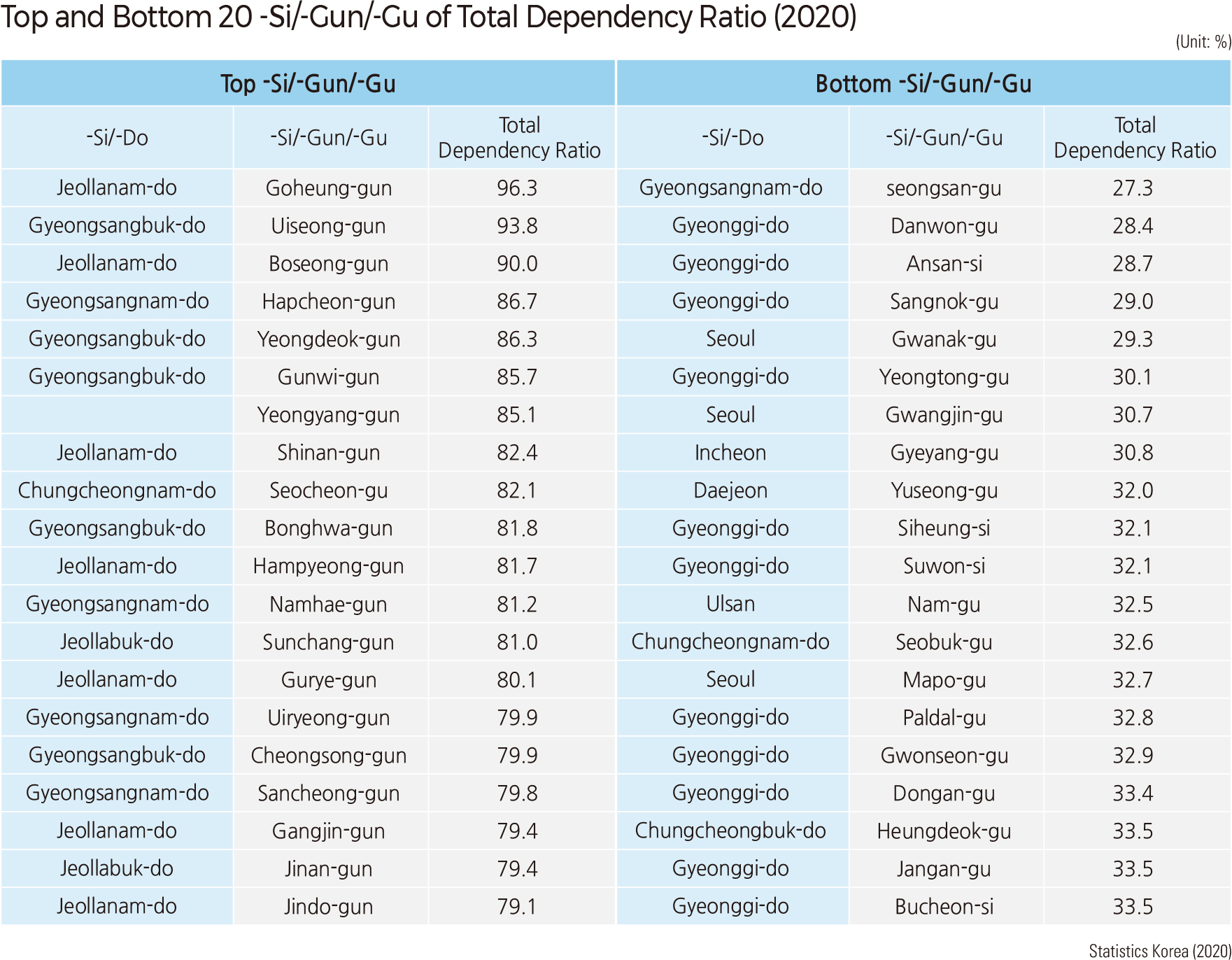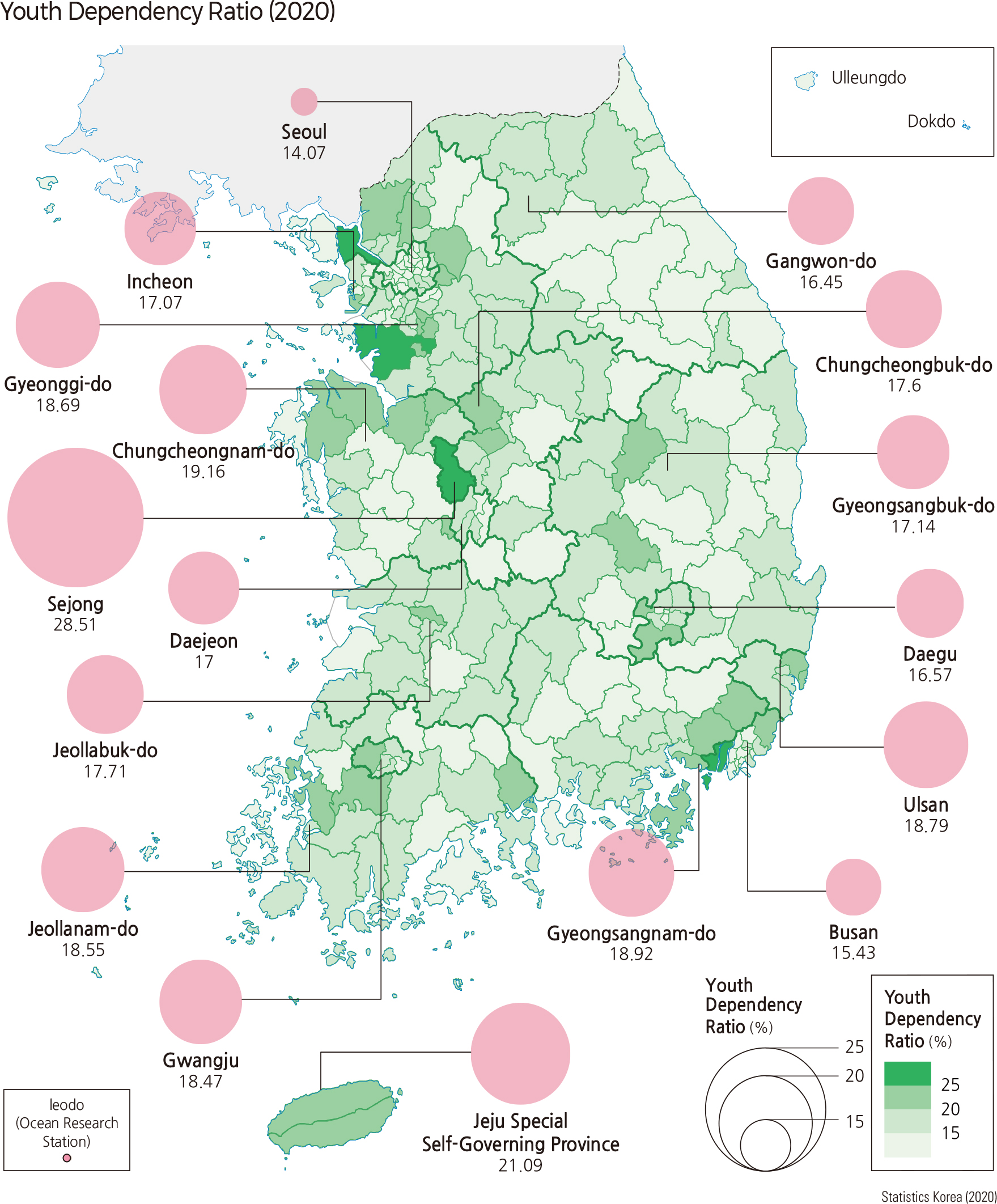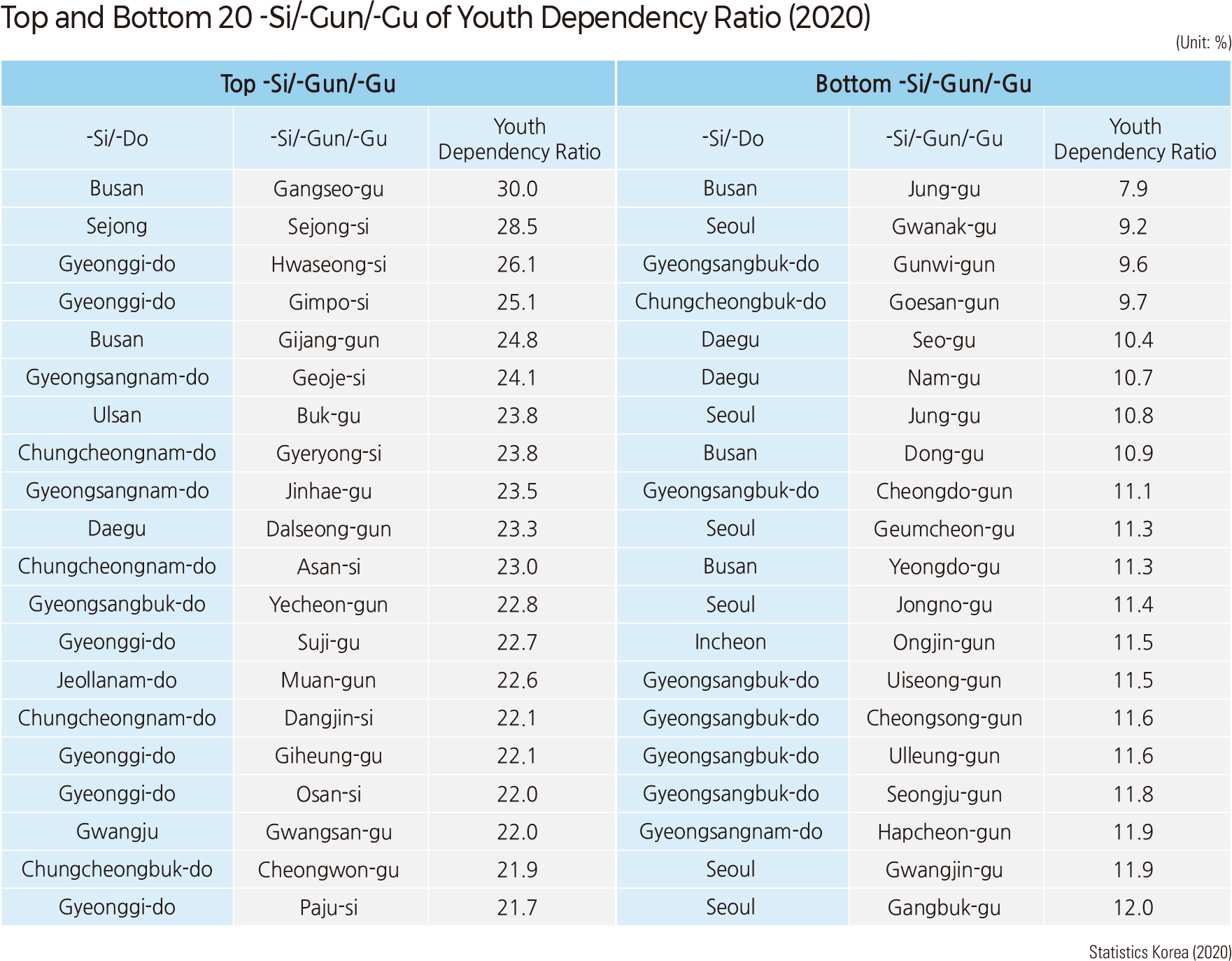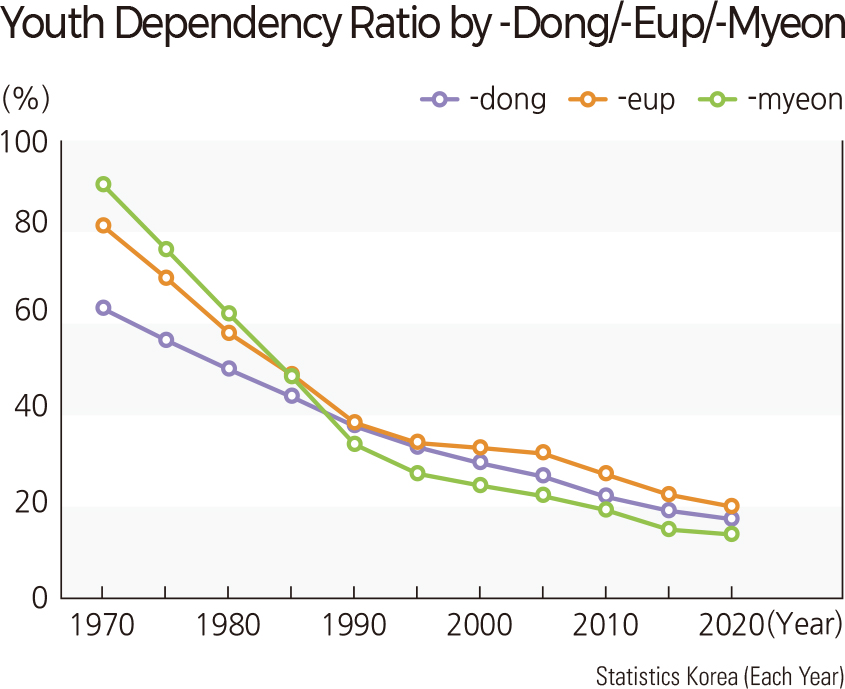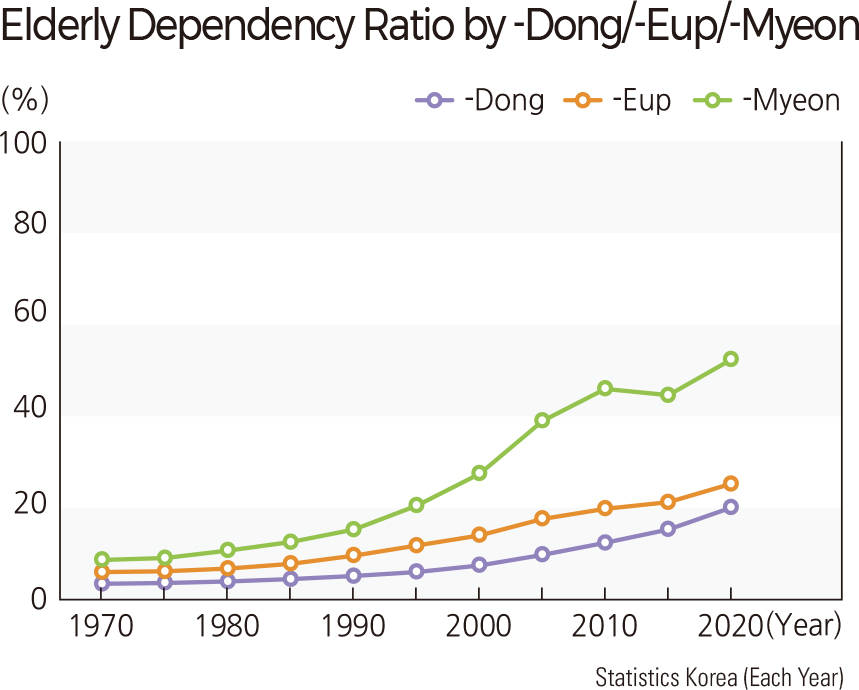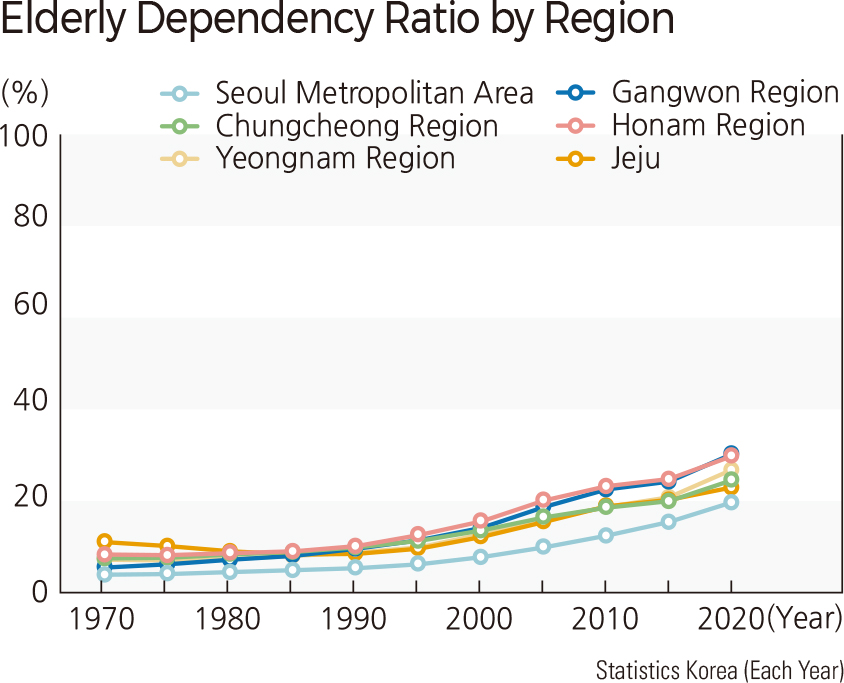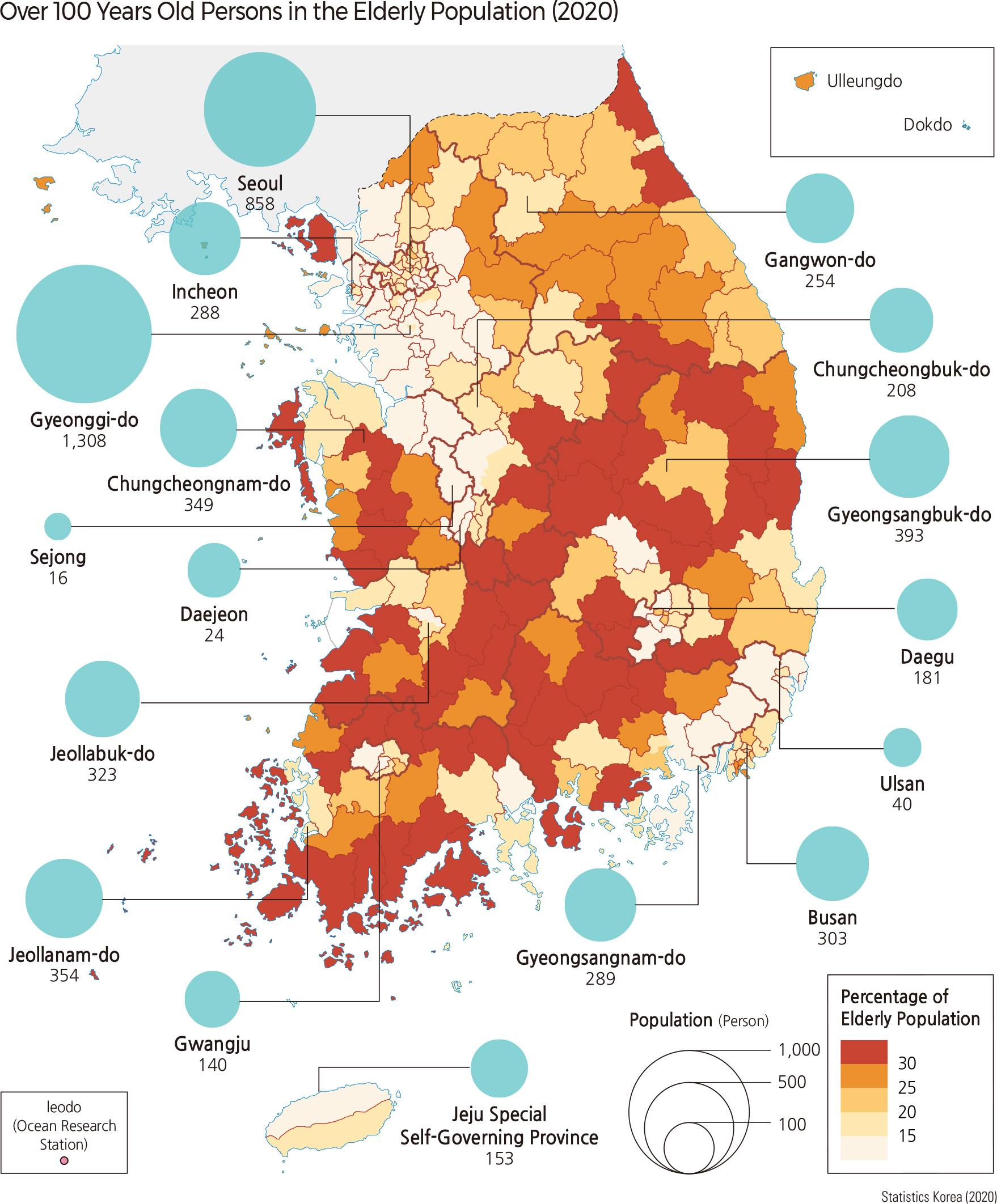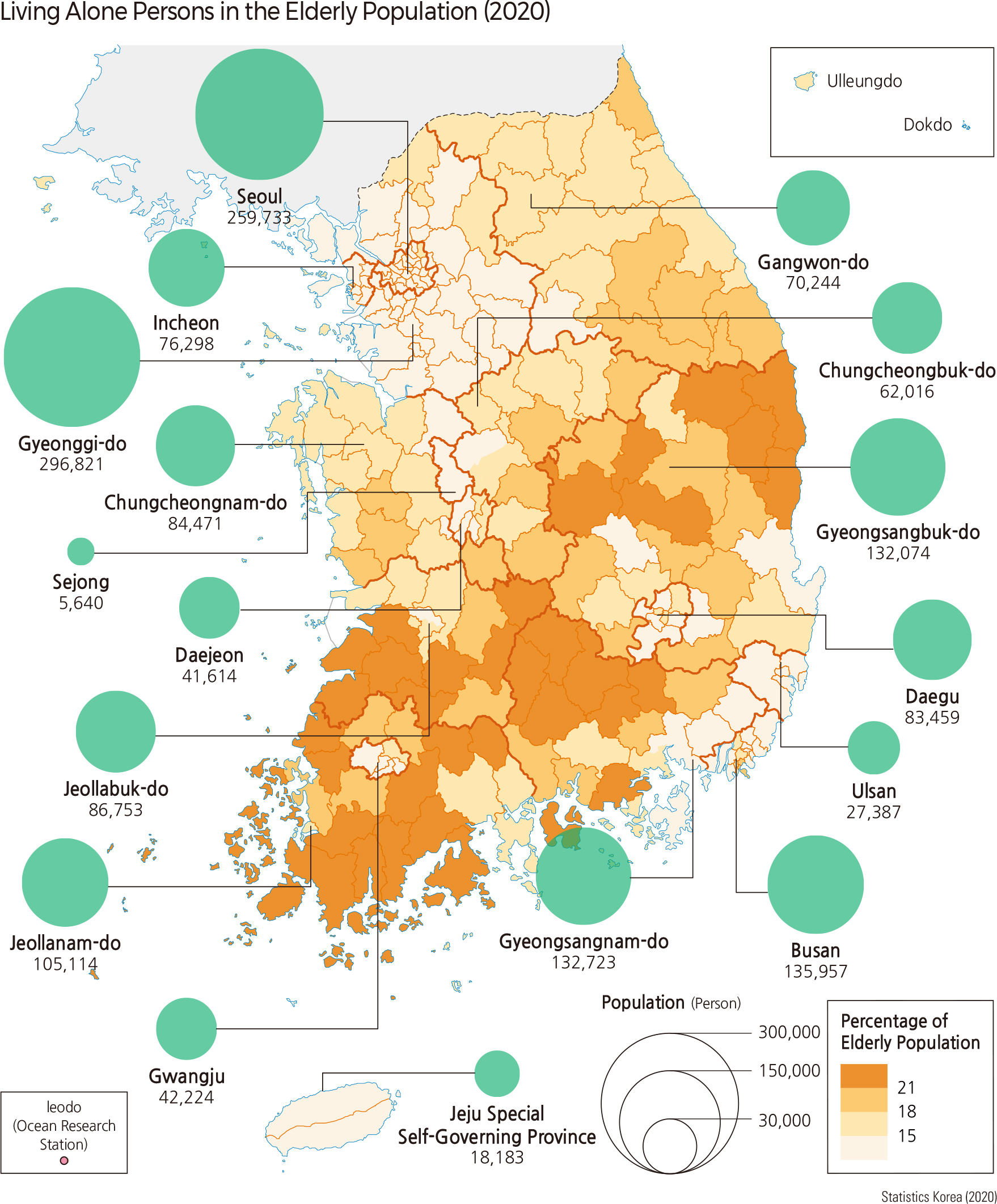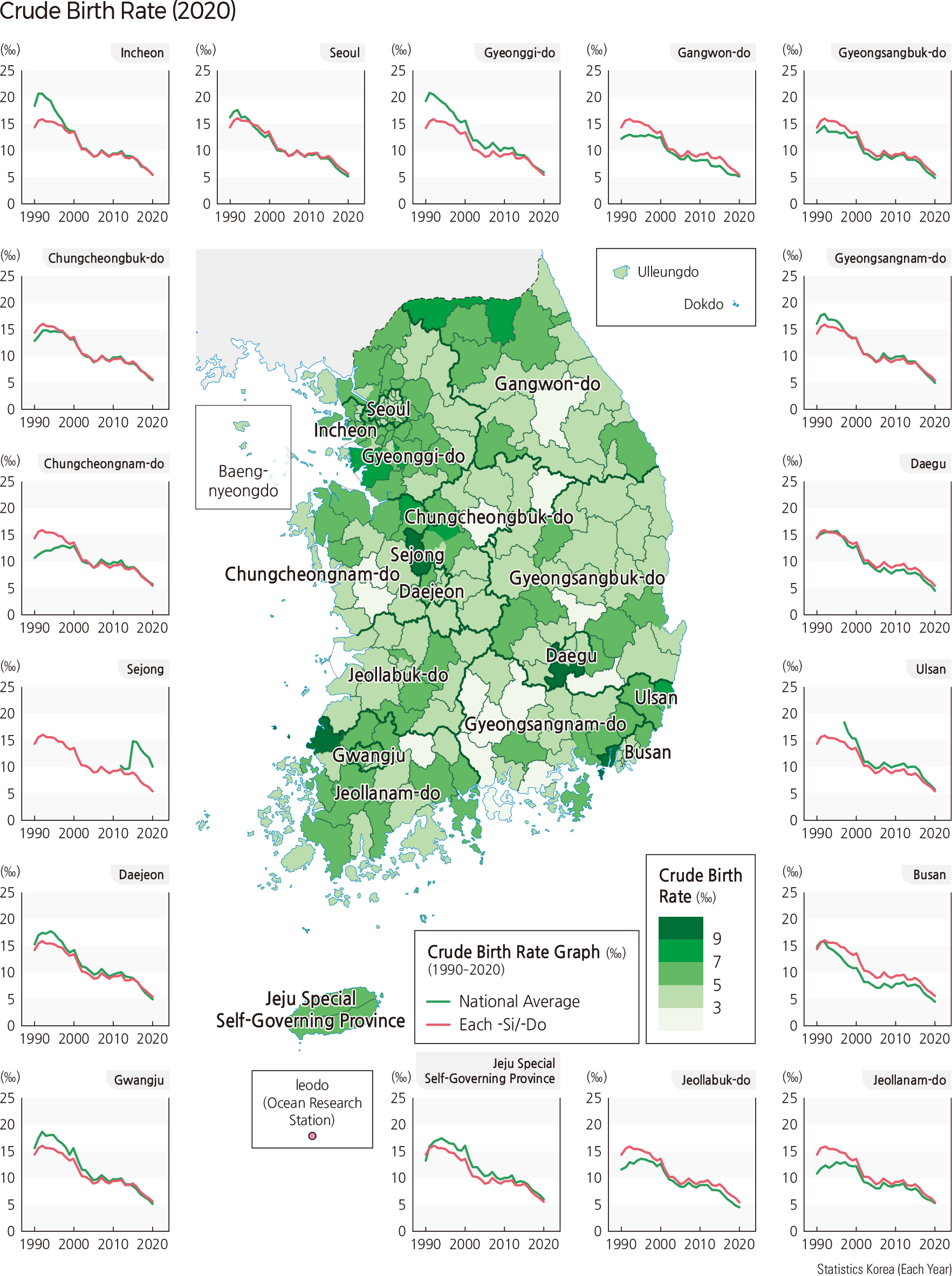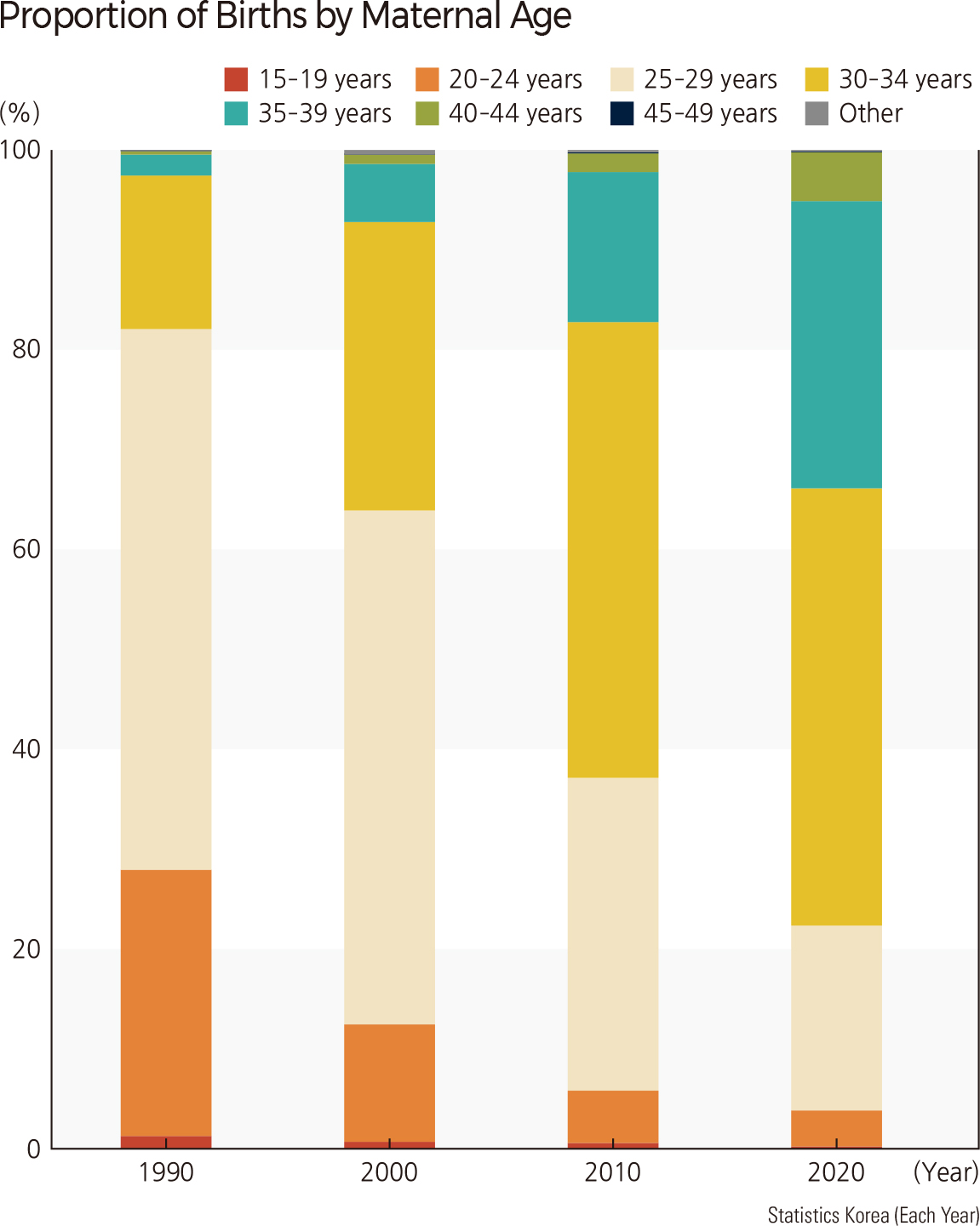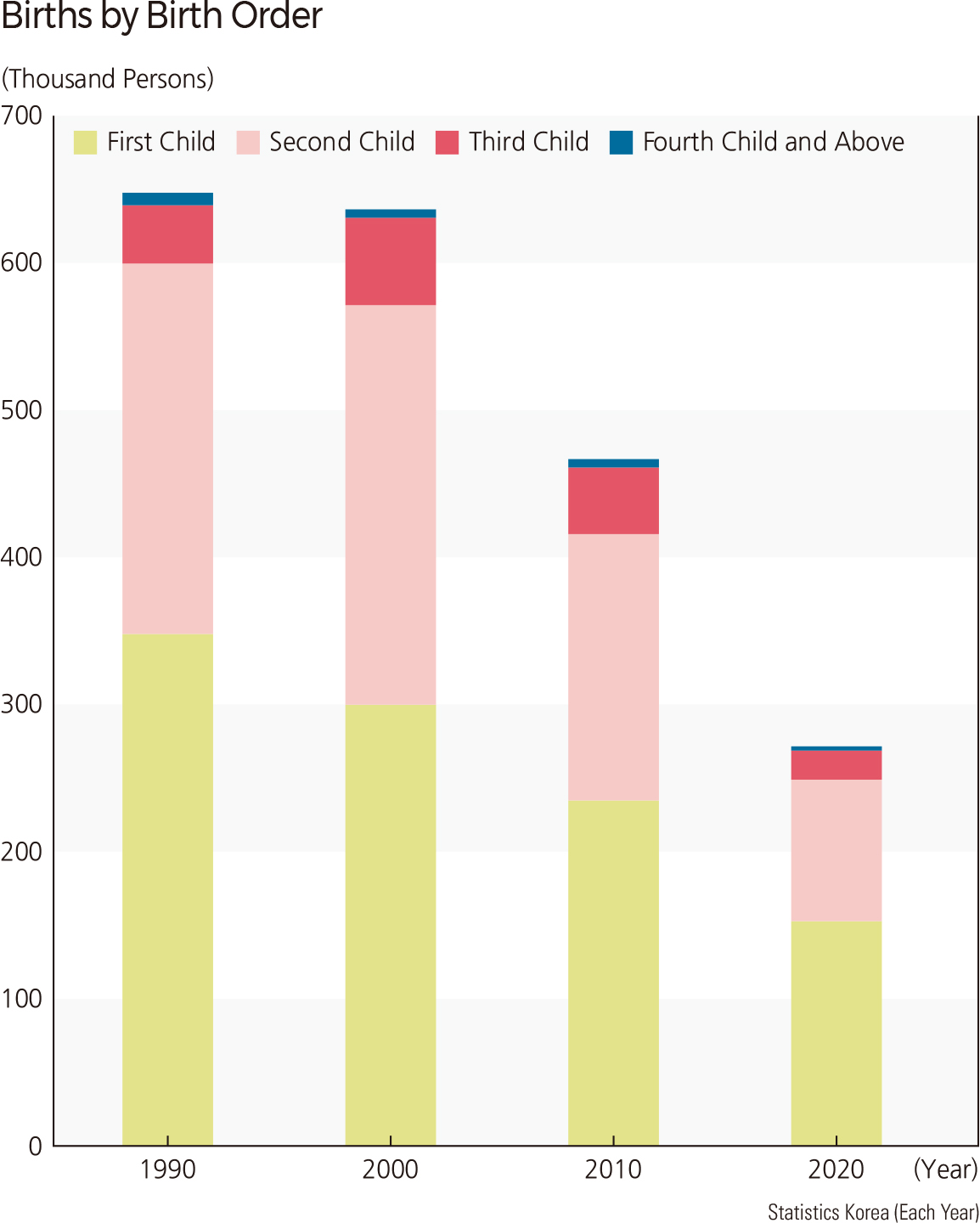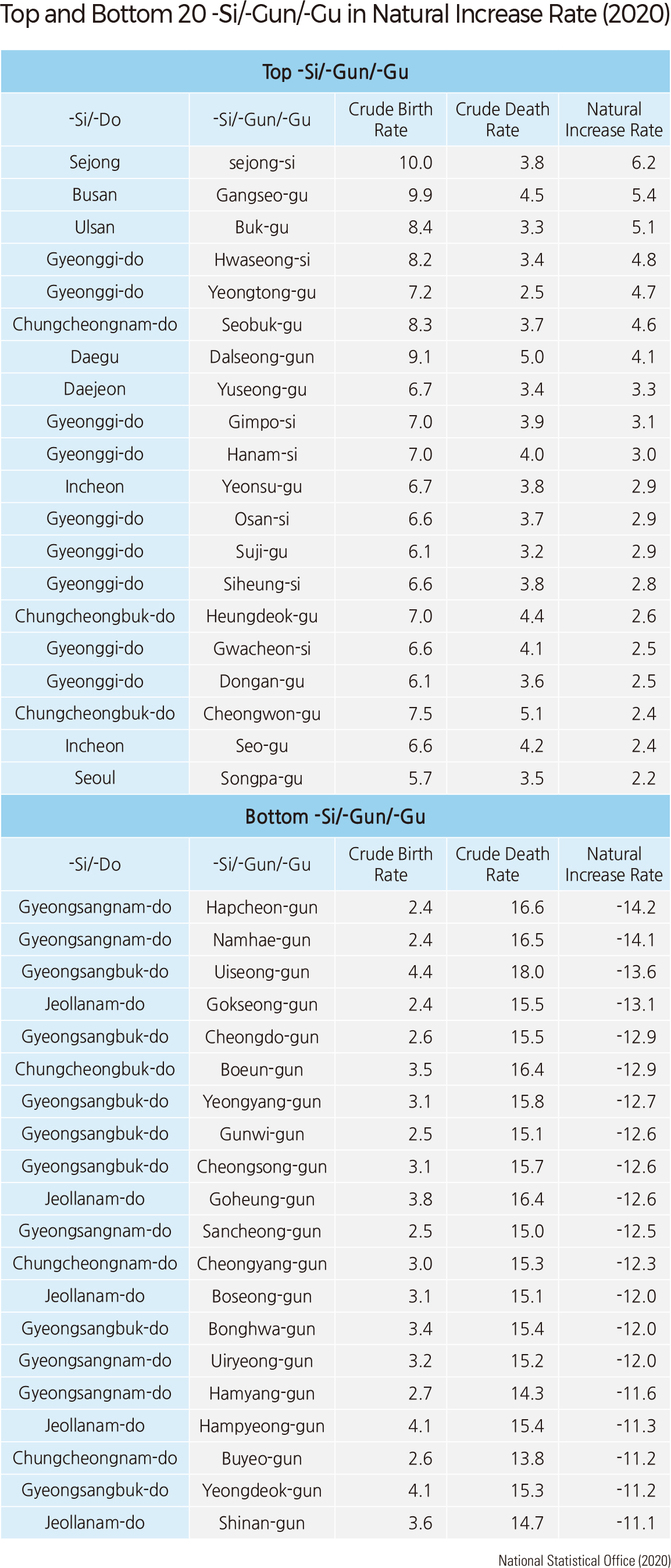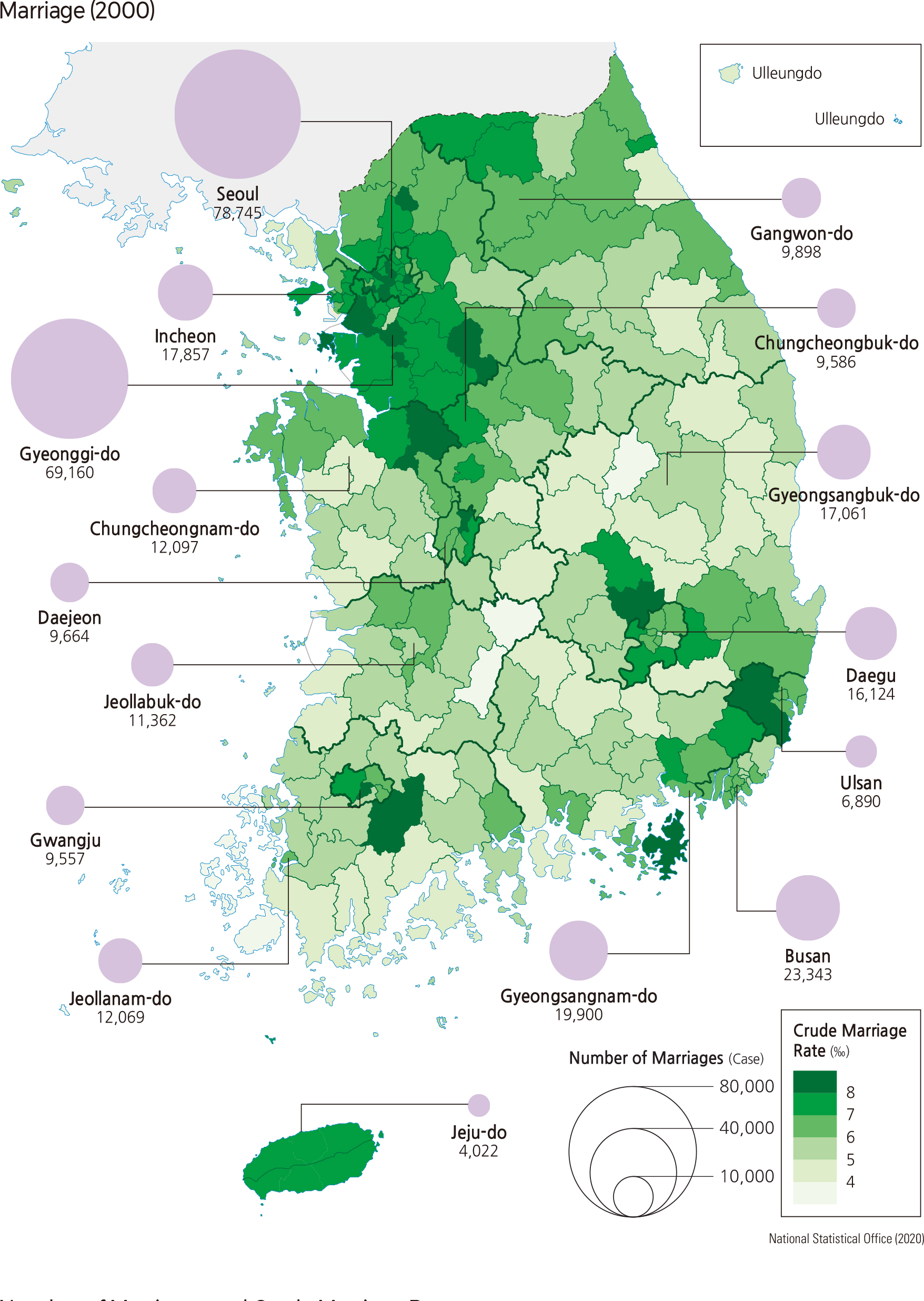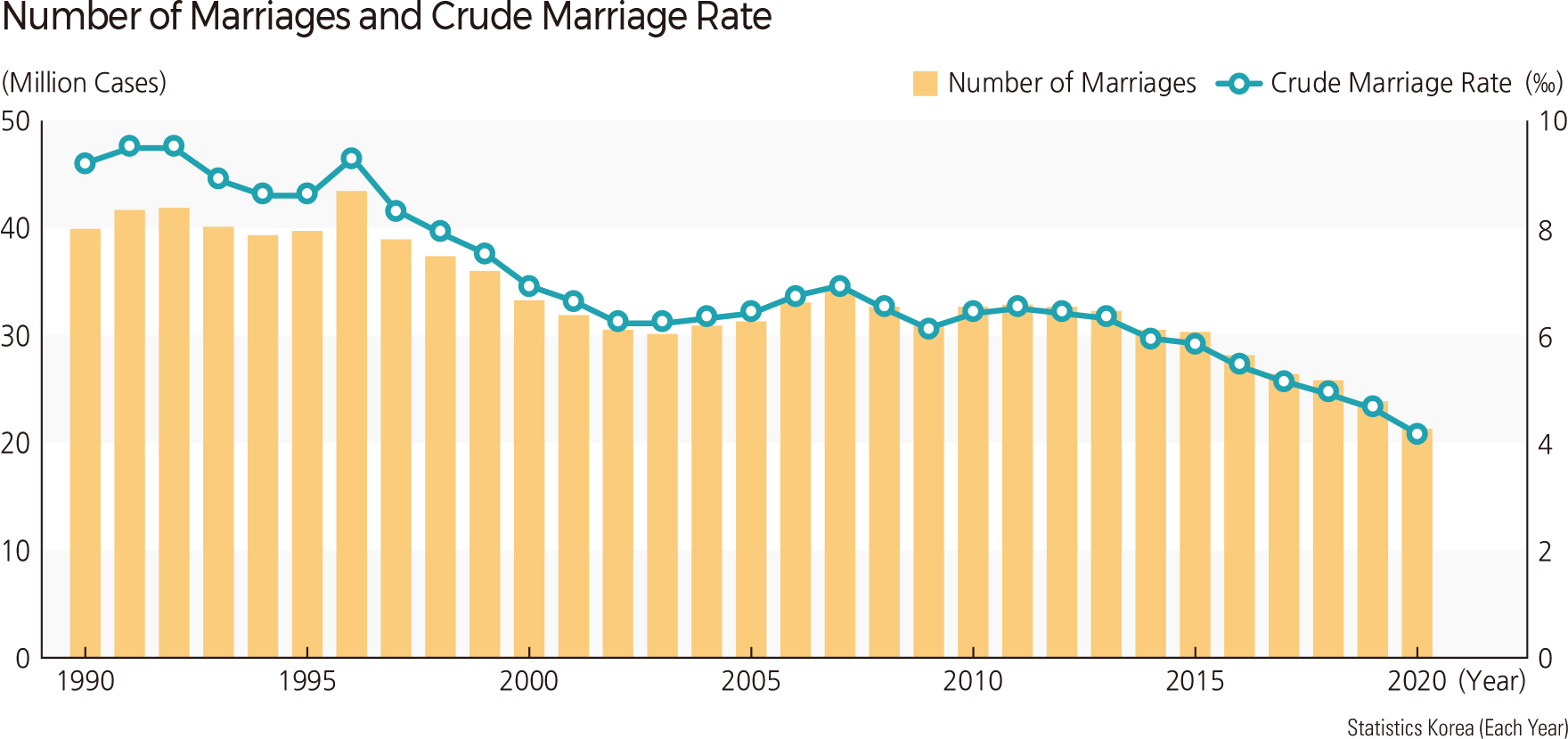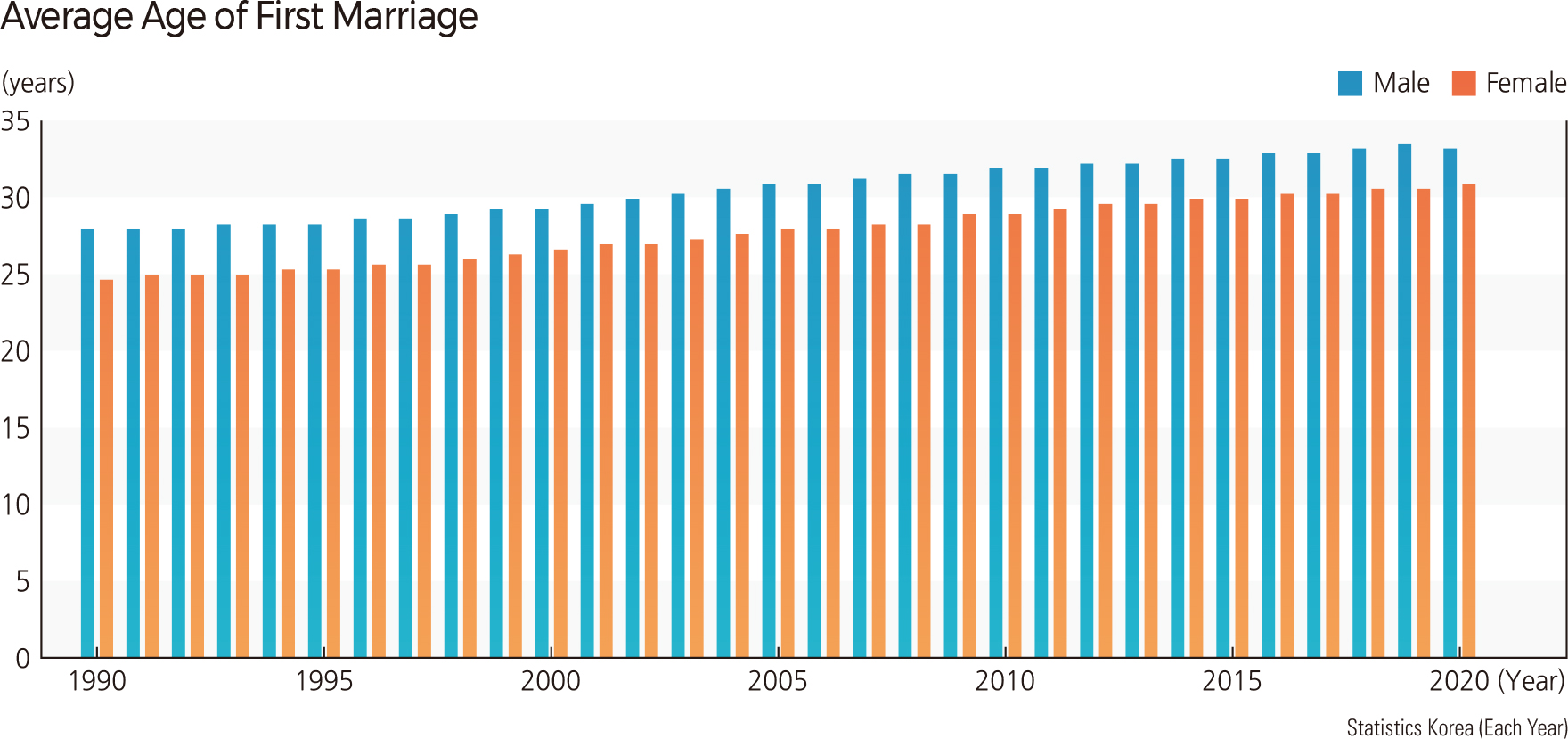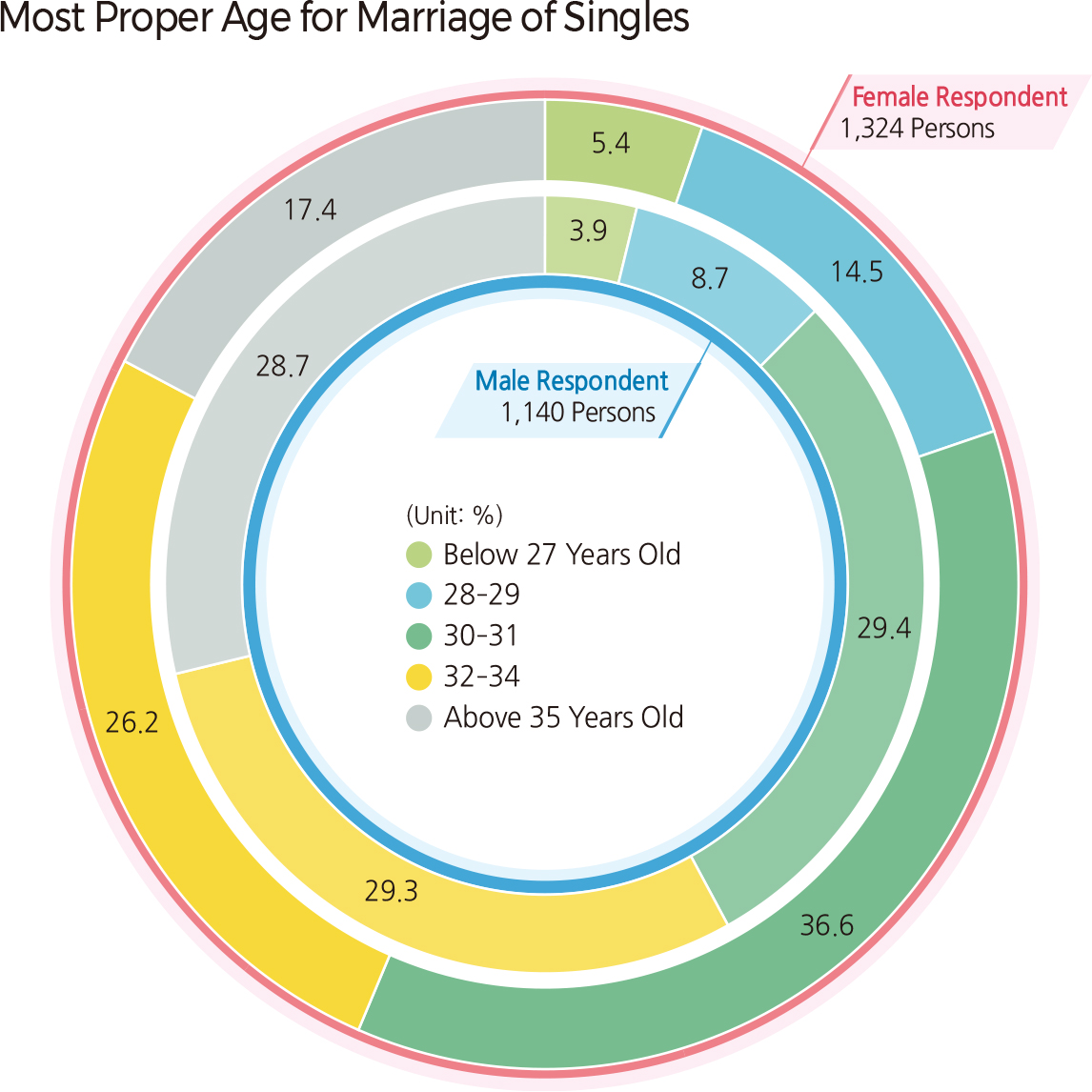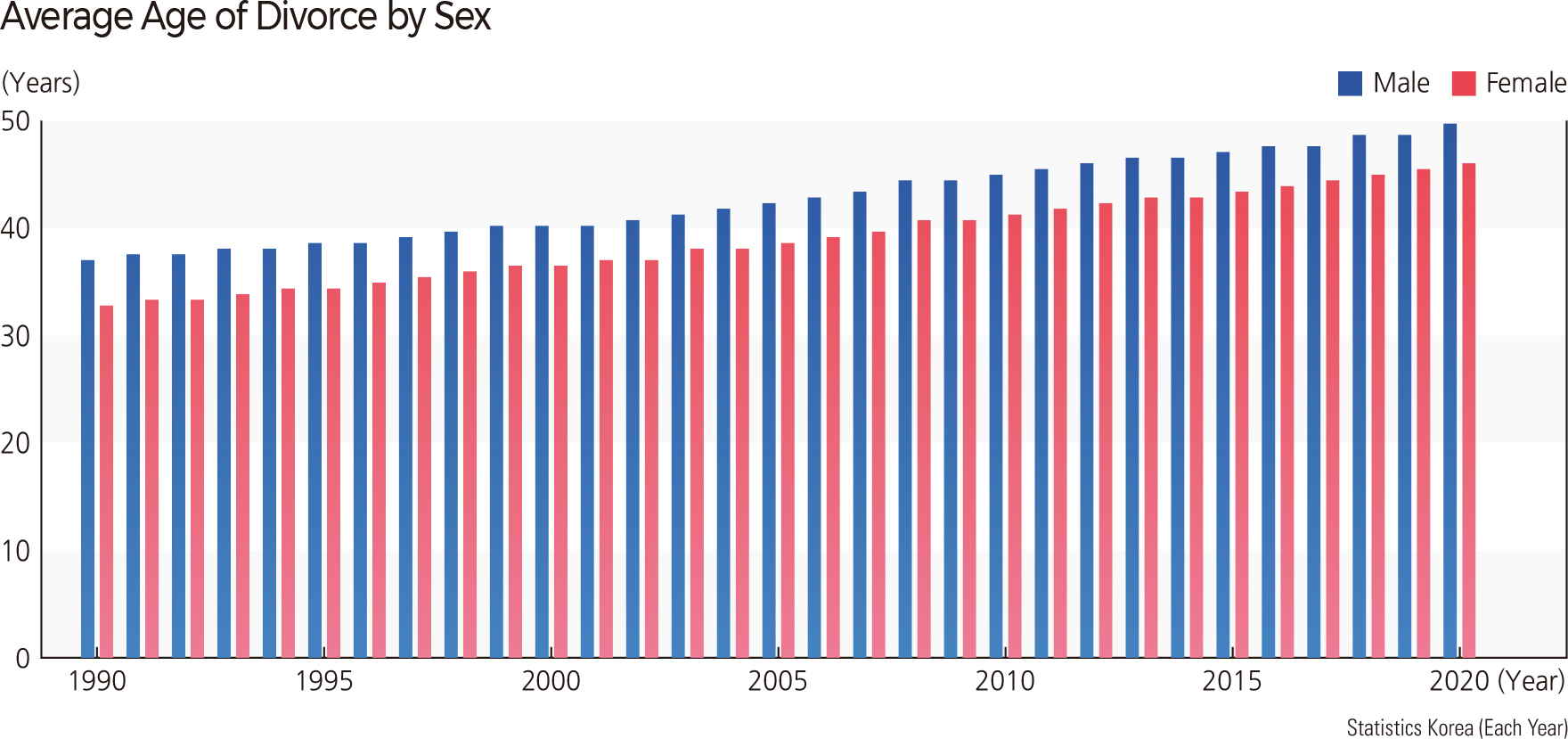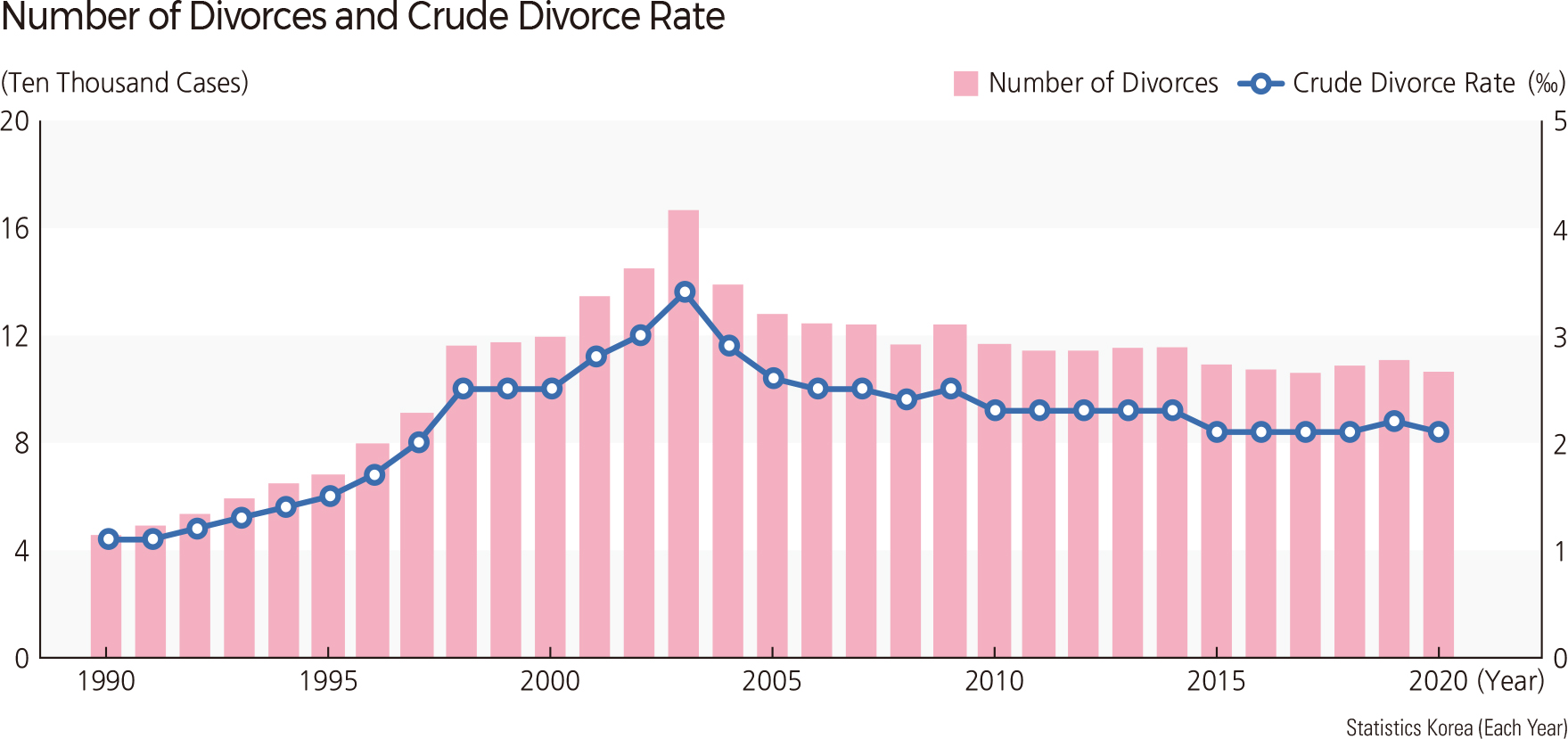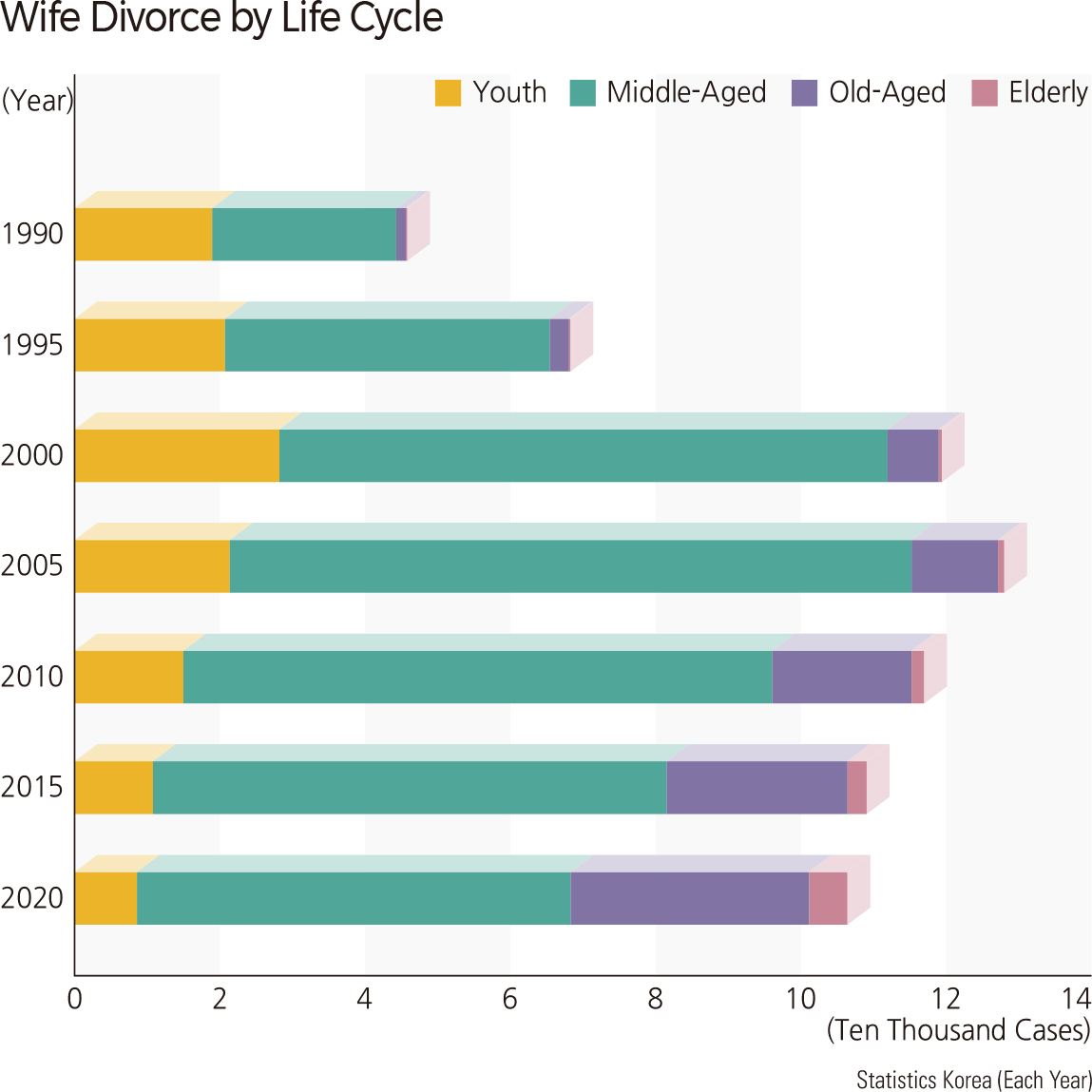English III 2021
Based on production activity, the Korean demographic change is characterized by a decrease in the youth population and an increase in the elderly population. The youth population, which exceeded 6.85 million in 1970, plummeted to 3.17 million by 2020 (a 54% decrease compared to 1970). In contrast, the elderly population increased sharply to over 3.5 million in 2020 (a 792% increase compared to 1970). When comparing the five-year-old population with 1970, a sharp decrease can be observed in the age group under 15 years old. In particular, as of 2020, there was a decrease of more than 1 million people in the age group, which can be interpreted as the large impact of the low birth rate. On the other hand, the population aged 15 years and older is increasing. The youth, working-age, and elderly populations are all concentrated in dongs and eups, which are classified as areas with an urban form over the past 40 years. The composition of each population group is large in the dongs. In particular, more than 80 percent of the working-age population resides in dongs, mainly in metropolitan areas with strong industrial and economic foundations. All of these population groups were generally evenly distributed in the Seoul Metropolitan Area, the Honam region, and the Yeongnam region in 1970, but the tendency to concentrate in the Seoul Metropolitan Area is getting stronger. As of 2020, more than 50 percent of the working-age population resides in the metropolitan area. As of 2020, this concentration of population in the metropolitan region can also be found in the distribution map of the youth population and the working-age population at the levels of metropolitan cities and provinces as well as -si/-gun/-gu areas. The age-group population is concentrated in the Seoul Metropolitan Area. Gyeonggi-do has the largest population in each population group. It results from the influx of young people into the province, following the development of new towns. The smallest youth population is found in Ulleung-gun, Gunwi-gun, and Yeongyang-gun. The largest elderly population is observed in Changwon-si, Gyeongsangnam-do and Goyang-si, Gyeonggi-do. The proportion of the youth population was higher than the averages of the OECD and the world until the mid-1970s. However, as the proportion has declined sharply, it is lower than the average of OECD countries in 2020. The proportion of the working-age population has been higher than the OECD or global average since the mid-1980s. By contrast, the proportion of the elderly population was lower than the averages of the OECD and the world until the mid-1990s. Since then, it has been higher than the world average and close to the OECD average due to the steep increase in the elderly population. |




